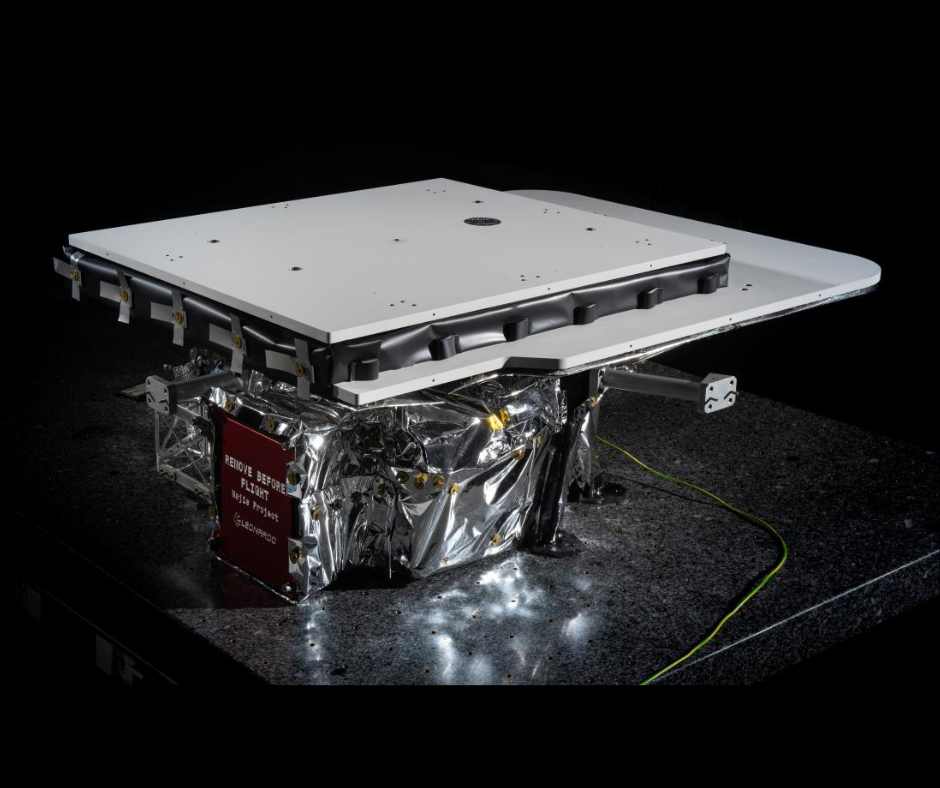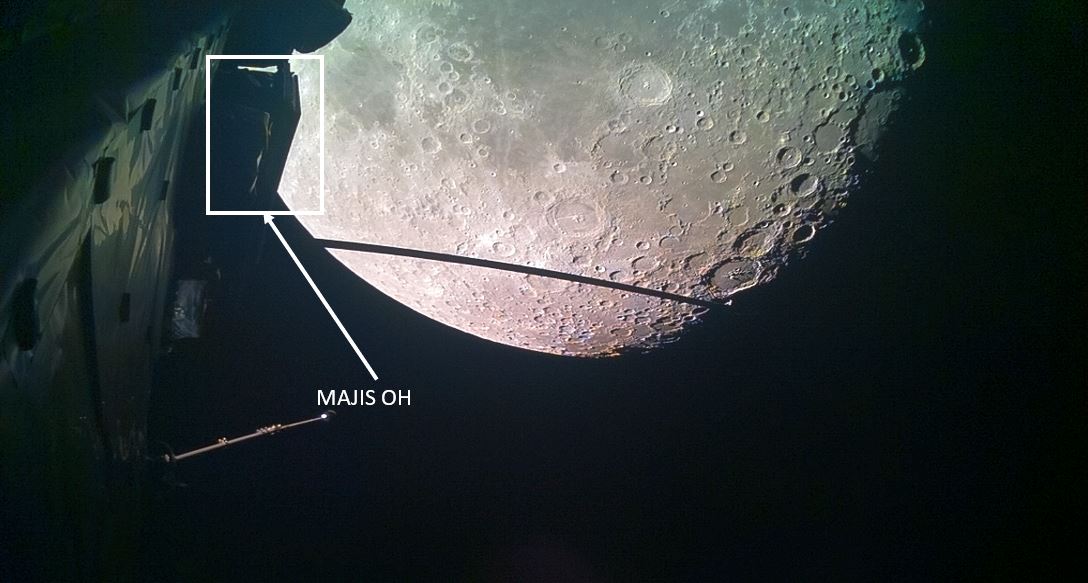
MAJIS spot the Earth during its fly-by towards Jupiter
The ESA mission's Juice probe recently successfully completed a combined Moon-Earth flyby, using the gravity of both celestial bodies to alter its trajectory and velocity in space. This pass was instrumental in propelling the probe towards Venus, its next target, scheduled for August 2025.

Platform of the Juice space probe including the Majis optical head photographed by the Juice Monitoring Camera during the Moon flyby on 19 August 2024. Credits: Esa
During the flyby on 19 and 20 August 2024, many instruments on board the probe were activated to test its performance, including several devices developed with Italian contributions including the MAJIS spectrometer, led by INAF Rome. The instrument is tasked with analysing the composition of Jupiter's icy moons and the dynamics of its atmosphere. The INAF Rome team, with Giuseppe Piccioni as Co-Principal Investigator, confirmed the excellent performance of MAJIS, revealing how this instrument is perfectly calibrated for the mission.

The Pacific Ocean seen by Majis on 20 August at 21:36 from a distance of 8700 km at three wavelengths selected to improve scene variability and composition. Image 3 was acquired in the thermal infrared wavelength, which provides a temperature map of the region. The dark spots correspond to lower temperatures. Credits: Esa/Juice/Majisteam (Ias, Inaf, Cnes, Asi, Esa and other international partners).
This operation not only optimised the probe's trajectory, but allowed it to reduce its fuel use and continue with greater safety margins for the mission's next crucial passages.

